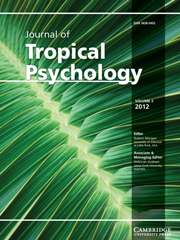Article contents
A brighter future for life in the tropics: translating big picture academic vision into practical research
Published online by Cambridge University Press: 27 October 2015
Abstract
The past decade has witnessed a significant resurgence of academic and developmental interest in the tropical zones of the world. The task of translating big picture academic institutional vision into practical research can, however, be quite daunting for those at the coalface of implementing such visions, not least because there is no guidance as to where exactly to start. Using James Cook University's tropical vision as a case, this commentary proposes a set of guidelines to assist research teams and organisations to translate the global tropical vision, especially the social and psychological dimensions, into practical research questions.
Keywords
- Type
- Comment
- Information
- Copyright
- Copyright © The Author(s) 2015
References
- 3
- Cited by




